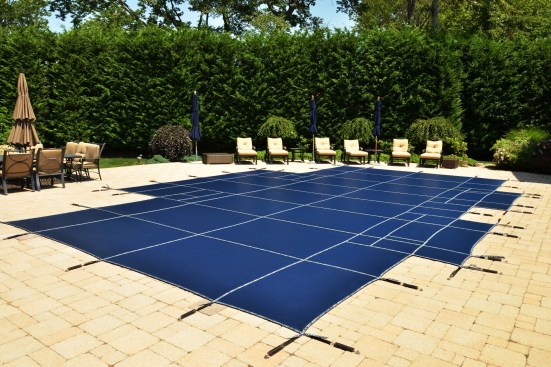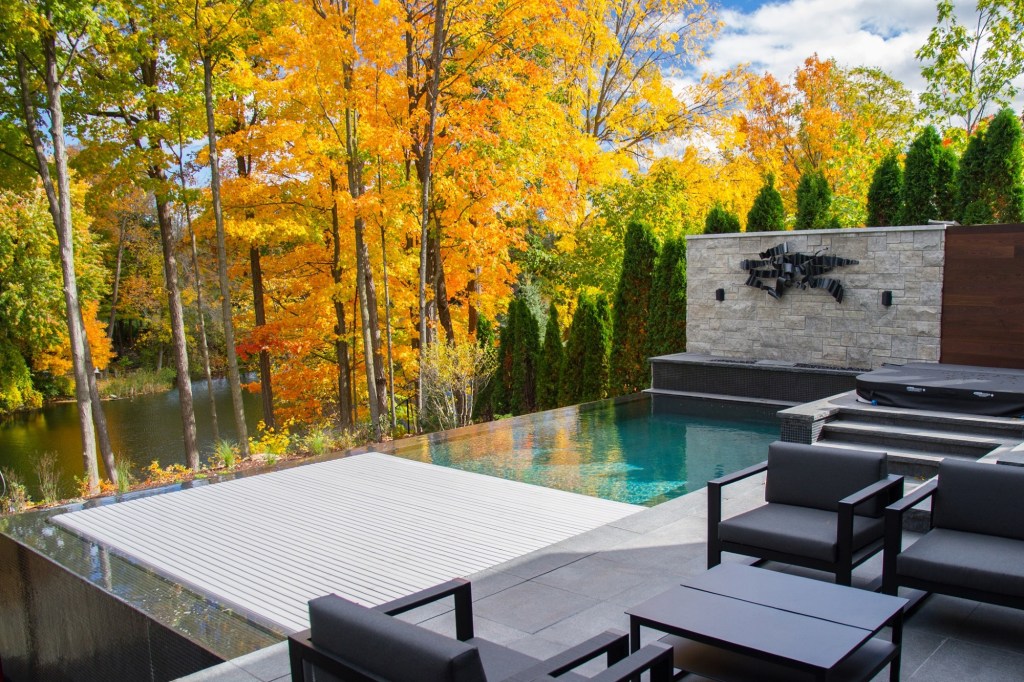Whether it makes sense to install automatic pool covers yourself or work with a contractor likely depends on your market and company resources.
Demand for automatic pool covers has been on a steady rise for decades. Customers and the builders who serve them appreciate not only the safety and convenience, but also the savings in water, chemicals and energy that virtually any type of cover can offer by containing evaporation and heat. With energy savings and drought mitigation becoming an increasing concern, this rise in demand only shows signs of continuing.
And as we continue to grapple with the effects of climate change, more areas are likely to see restrictions based on water and energy conservation.
Prolonged and worsening droughts in California and other areas in the Western U.S. have already prompted certain states to put strict water restrictions in place.
“The number one reason why today you’re going to have pool covers is the drought,” says Rich Gallo, owner and CEO of service firm Pure Swim in Los Angeles, Calif. “LA County put in heavy restrictions starting June 1. If I were selling pools, I wouldn’t build you a pool unless it had a cover.”
As a result, some builders have decided to add installation to their business. Before taking the leap, builders should consider a few key points.
Market Landscape
Sometimes, geography will decide for a builder whether or not to install automatic covers in-house.
Pool and spa markets can look quite different, depending on geographic location. Areas such as California and Texas, for instance, may have more installation companies to choose from than do areas further to the north. If you don’t install covers and have no specialty contractors in your market, you could face losing business.
Some builders have made automatic cover installation part of their business out of necessity.
“We don’t have a market where you sub out those sorts of things,” says Carla Sovernigo, president and CFO of Alka Pools in Burnaby, British Columbia. “In a market where that’s available, that may be more to your advantage because you can use your resources elsewhere.”
Where subcontracting offers the ability to channel energy to other things, incorporating installation into your own business allows for more control over the installation timeline and quality of work.
“We can install a cover on our own schedule, not someone else’s schedule,” says Joe Dempsey Jr., COO of Aquality Construction in Broomfield, Colo., who installs both out of market necessity and preference. “Installing them allows us to understand how they work, which helps service them.”
Acknowledging the benefits and popularity of this category, along with local requirements to include covers for energy savings, Dempsey and his company have fully committed to it. “We include an automatic safety cover in every new build that we do,” he says. “It’s included in our base pool and base spa. ”
In the pool and spa service sector, company owners also must decide whether or not to provide cover maintenance. Even if you find a reliable specialty contractor, things can change, especially in these historic times. As demand increases, subcontractors can become stretched thin, leading to prolonged delays. Gallo is experiencing this on the service end in his market.
“Because there’s been such a high demand, the specialty companies that do the [automatic cover] service have focused on installation over service,” Gallo says. “Now, people who have had these over the last five years can’t find companies to service them.”
This has prompted Gallo to reevaluate his business offerings to include servicing automatic pool covers.
Training and resources
Making the transition to installing automatic covers will take an initial time investment.
You’ll need to have members on staff who can be trained, and then they’ll need to be immersed in that instruction with the manufacturer.
When selecting trainees, look for those who are more mechanically inclined, have technical and problem-solving skills, and pay close attention to detail. According to Dempsey, anyone who works on pool equipment should be able to handle automatic-cover installation. The ability to troubleshoot and think critically also come in handy. “The biggest reason [for auto-cover failures] is they have to be installed perfectly,” Dempsey says. “If they’re not installed perfectly, they won’t run perfectly.”
Successfully adding installation to your business also requires partnering with the right automatic-cover manufacturer, especially for that initial training. Dempsey recommends selecting one that can send a technician to install the first cover with your trainees and is willing to go on site to look at defects and get replacements to you.
A partnership is especially important when you first bring installation in-house. “You really want to lean on the manufacturers for training and information,” Sovernigo says. “It does take precision. You can’t force installation.”
During the learning phase, follow manufacturer instructions to the letter. “Don’t test the limits of what the manufacture recommends unless you really understand the cover system that you’re using,” she says.
That partnership should continue. Like any new skill or process, automatic cover installation will probably take some time to perfect. And even builders who have installed for years can encounter challenges.
“When we get a design that’s a bit challenging, we bring the manufacture into the discussion,” Sovernigo says.
It’s a message that Dempsey continues to hammer home with his crews, even though his company has been installing covers for more than 20 years. His first question to his installers when they encounter an issue: “Did you call our service rep?”
Safety Covers and Customer Satisfaction

Loop-Loc
Installing winter safety covers can be a profitable part of a pool builder’s or service company’s business. However, if you’ve never done it before, it will take some time to set yourself and your employees up for success. After all, installation involves drilling holes into patios, some of which can be made of expensive materials.
“You can make very costly mistakes if you don’t know what you’re doing,” says Mike Giannamore, president and owner of AQUA Pool in East Windsor, Conn. “At the same time, if you do learn properly [and] take necessary precautions with the equipment, there is money to be made when selling them.”
Since installation must be done with care, Giannamore recommends carefully selecting the staff members who will work on safety covers. Attention to detail and patience are key traits.
“You need an employee who wants to do things right and is willing to take their time,” he says. “There’s a big difference between a well-done install and a rushed job.”
Once your crew is ready, you’ll want to decide which manufacturer to carry. Pick the one that has the time and staff for training and troubleshooting. Manufacturers were instrumental in teaching Giannamore’s employees the tricks of the trade, and they even went out to help measure on difficult pools. He now has enough employees trained that they can teach new people themselves.
Even when you do know what you’re doing, certain imperfections are inherent to the process and materials. Setting expectations with customers can go a long way to avoiding complaints.
As a first step, have them sign a contract that defines the agreement for the installation process, including when your business can be held responsible for something and when it can’t.
“You want your contracts to be very clear about chipping and cracking, especially when drilling into natural stone,” Giannamore says. “When you begin to drill — no matter how careful you are — you can get chipping around the hole.”
While chipping may not be avoidable, customer dissatisfaction can be. For instance, Giannamore takes advantage of the brass flanges that most manufacturers offer to place around each anchor. These often conceal chipping issues, so Giannamore automatically sells each safety cover with this hardware. He also makes clear that they will be installed. This allows for the coverage of imperfections and establishes the expectation with the customer that there will be brass flanges around the anchors. Making such provisions after the fact can cause problems: If you don’t show the customer the flanges and end up needing them to cover imperfections, the customer could become upset if they don’t like the aesthetic.
Natural stone also moves during drilling, which can be upsetting to a customer who has a brand-new patio with perfect-looking grout. To avoid dissatisfaction here, AQUA Pool asks customers to wait one year before getting the safety cover installed. It gives the stone time to settle naturally, making movements during drilling less noticeable.
